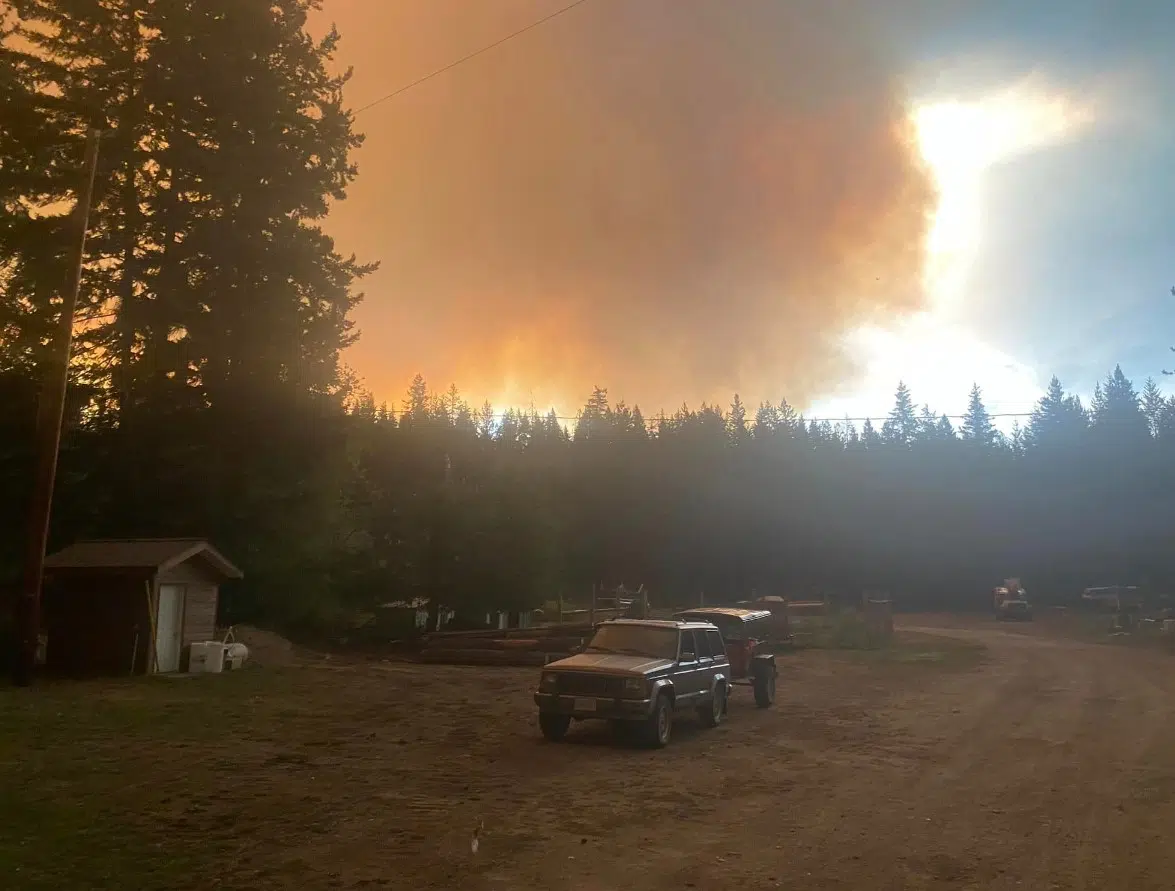
A look at the Bush Creek East Fire in the community of Celista, in the North Shuswap, as seen on Aug. 19, 2023. (Photo via Dawn Bentley)
A public meeting in Celista tonight will hear the results of a citizen-led investigation into an August backburn conducted by the BC Wildfire Service.
Lee Creek resident Jim Cooperman says he’s done extensive research into what was supposed to be a controlled aerial ignition about three kilometres from the front lines of the Bush Creek East wildfire.
Speaking on NL Newsday, Cooperman says a shift in winds and breaks in a fireguard between the backburn and the community, likely resulted in the loss of homes.
“They were attempting to use the power line that runs East to West. The problem is that the power line goes over the Lee Creek Canyon and of course there’s no control line in a canyon,” Cooperman said. “So of course the fire went right underneath the power line into the canyon and popped right back up into Lee Creek.”
“The controlled burn became uncontrolled when the wind switched direction, which they knew was going to happen.”
In August, Cliff Chapman, the Director of Provincial Operations for the BC Wildfire Service pushed back against those concerns, saying sustained high winds that changed the course of the fire were responsible for much of the damage.
“As those winds were approaching, there was a continuous line of fuel between the main body of the fire and all of the communities along the North Shuswap,” Chapman said. “We did our planned ignition under the conditions it which we planned for.”
“I want to be perfectly clear, that planned ignition saved hundreds of homes and properties along the North Shuswap.”
Cooperman disagrees, saying about 10 homes that were near his property were destroyed. He’s also filed a complaint to the BC Forest Practices Board, which is investigating the province’s response to wildfires.
“[The fire] blew right down the powerline in that dead brush and right into Scotch Creek and Celista,” Cooperman said. “It was into Meadow Creek which is up above Celista within two hours after they had lit it.”
“The existing fire was actually stopped because it was up against a forest of a dense, spruce/balsam forest that because the canopy was closed the moisture was retained on the ground and it was going nowhere. When the wind came up it really didn’t move very far at all. So the existing fire never came to us at all.”
Cooperman will present photos, and interviews with experts as part of the presentation.
It starts at 7 p.m. at the North Shuswap Community Hall.















